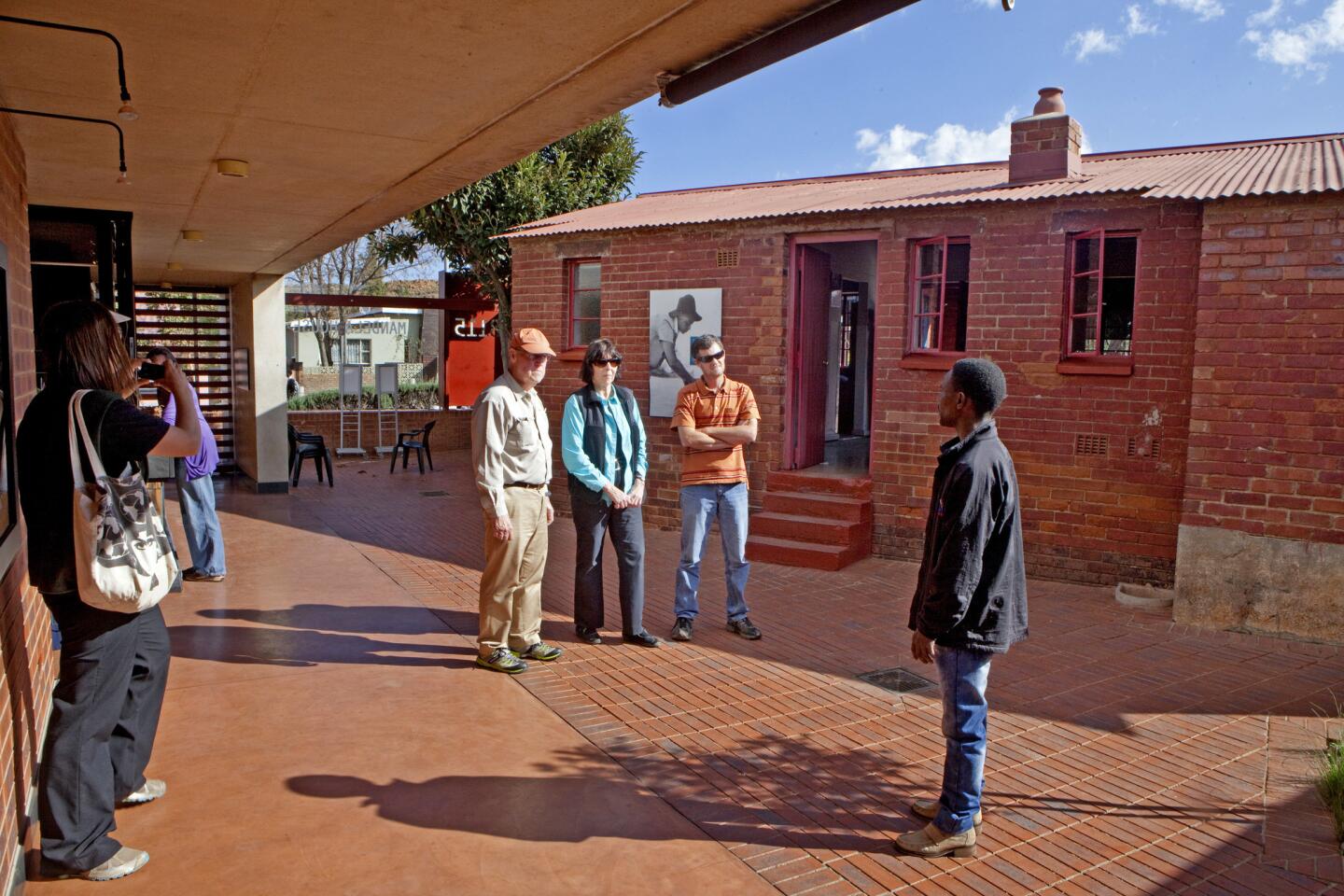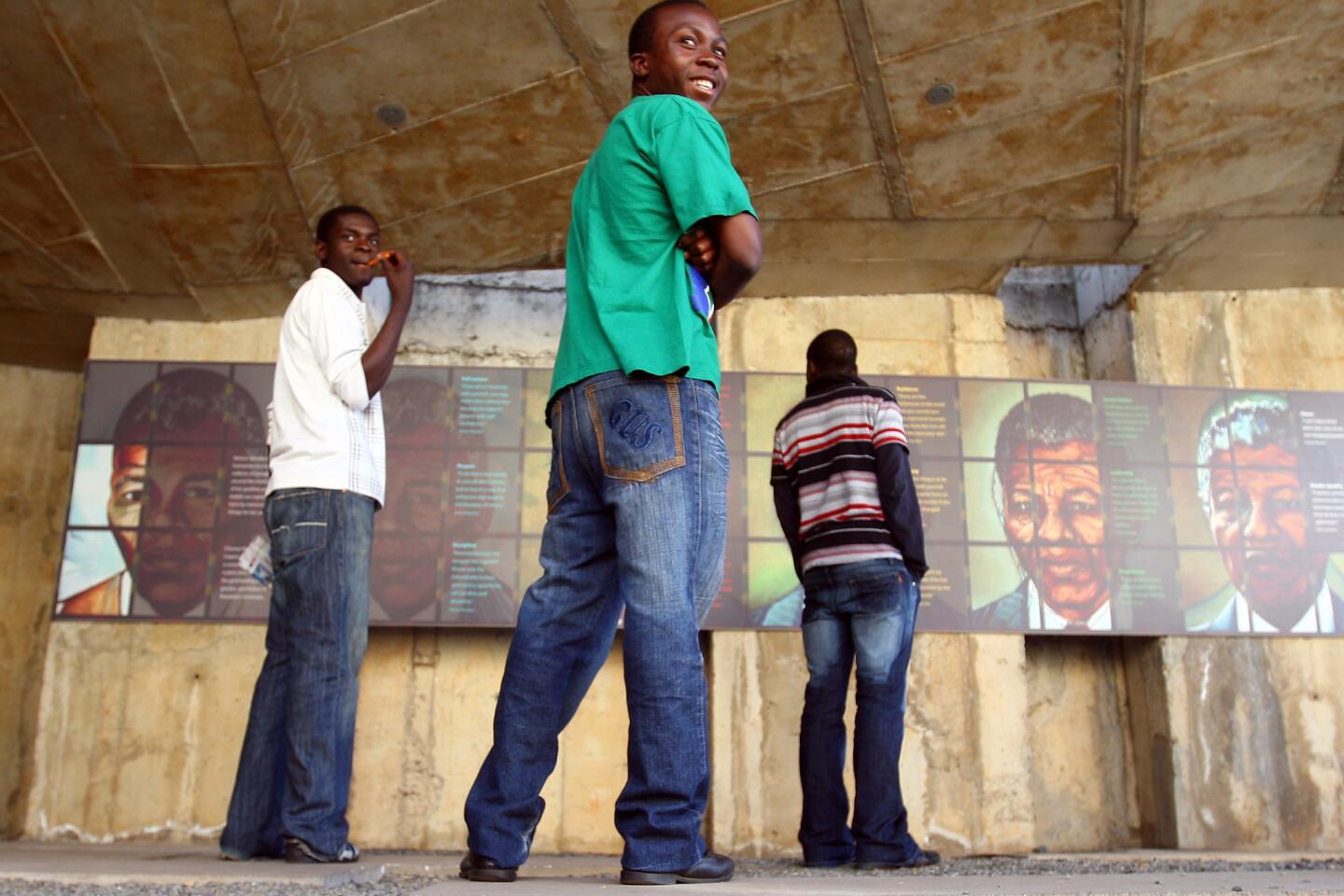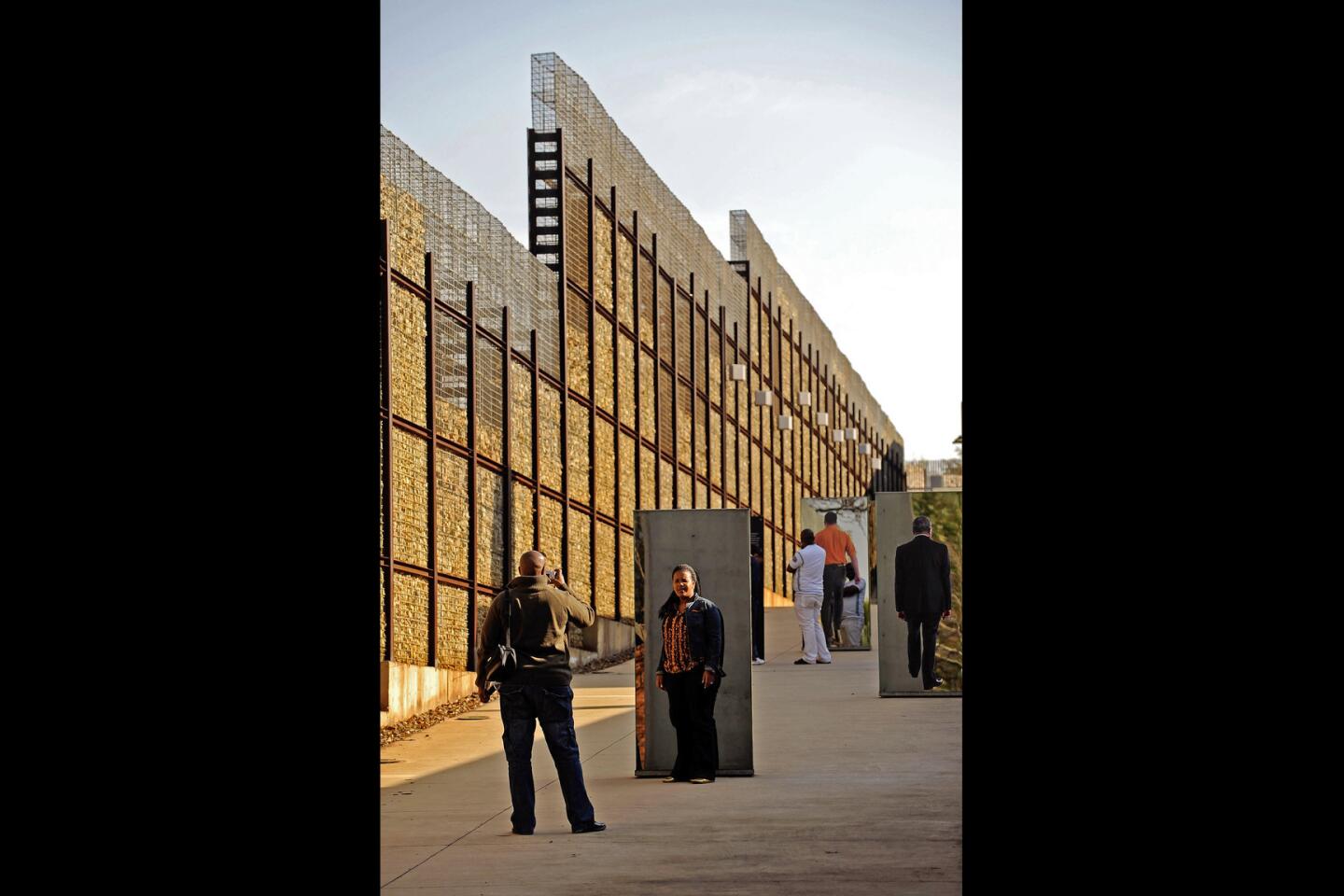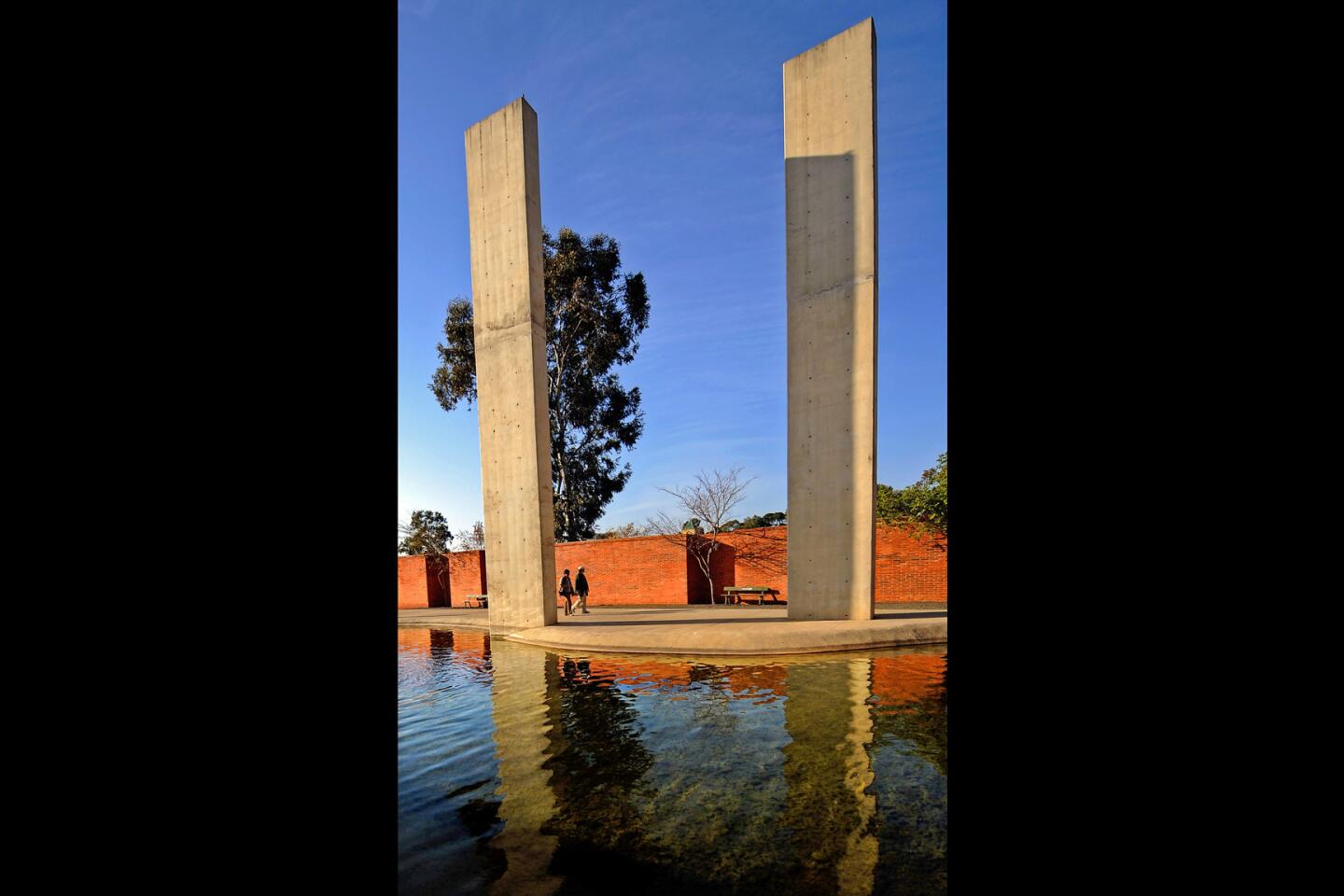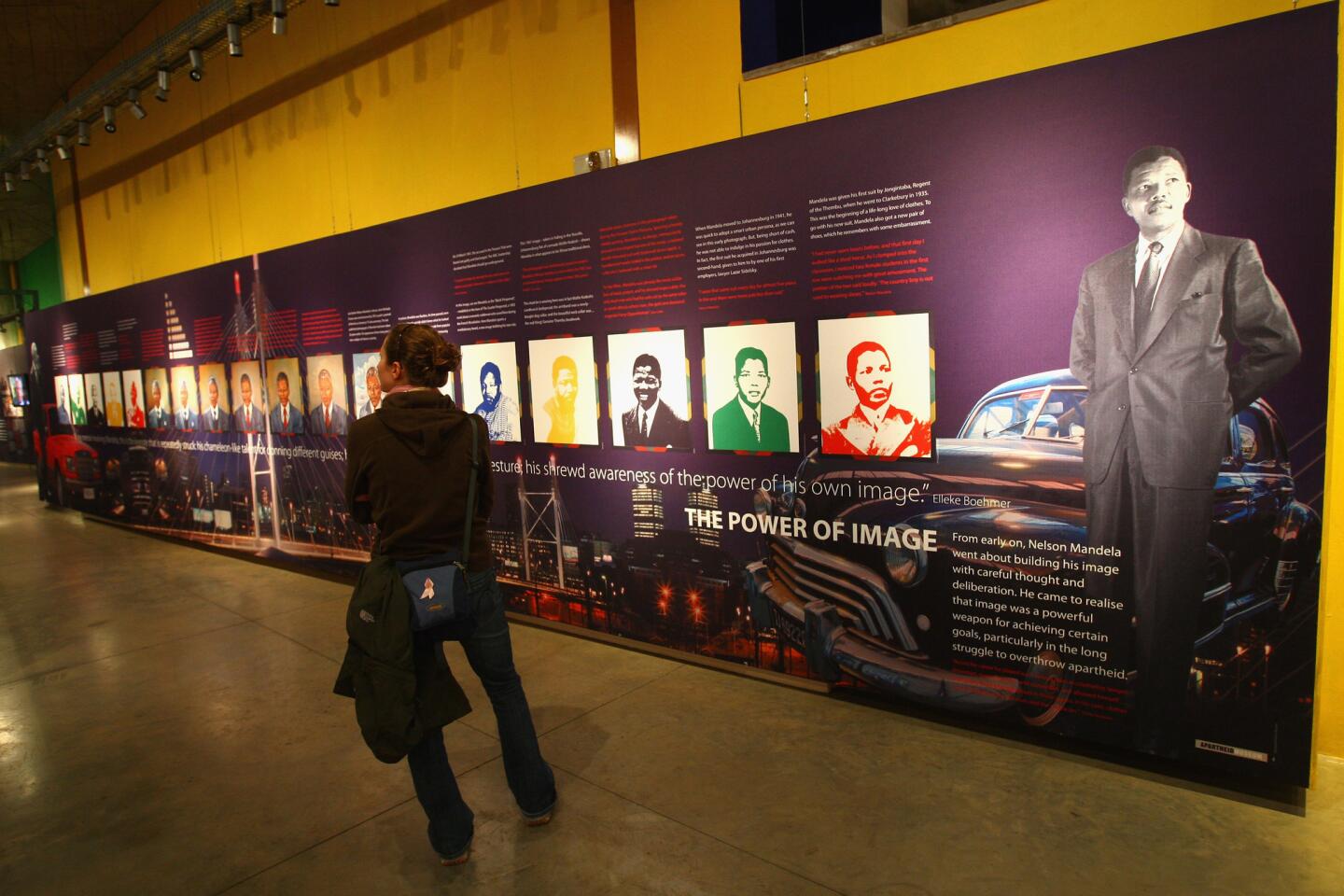Follow South Africa’s road to freedom at ‘sites of memory’ including Mandela’s Soweto home
JOHANNESBURG, South Africa — The last time I visited the little house on Vilakazi Street, Nelson Mandela was sitting in the backyard, shaded by rustling trees and surrounded by a handful of men and women whose names today grace streets, bridges and schools.
When I returned in May to the house in Soweto, the trees were gone (root problems) and the tall green wood fence too. But I instantly recognized the white metal lawn chairs on which Mandela, Walter Sisulu and other South African liberation luminaries had been sitting on that day in 1990.
Mandela’s Orlando West home is a museum now, part of South Africa’s patrimony, a spit-shined symbol of the courage and sacrifice of those who spent decades battling apartheid. Merchants sell knickknacks on the street outside, near Mandela’s Family Restaurant. Just a few blocks away is the Hector Pieterson Museum, named for a 13-year-old boy killed in the 1976 Soweto uprising.
The end of apartheid opened South Africa to guilt-free exploration by the rest of the world. And for the last quarter of a century, jump-started by the World Cup in 2010, international tourists have enjoyed its multitude of charms: luxury game safaris. The Cape of Good Hope. Meet-and-greets with great white sharks. Wineries on the rolling hills near Stellenbosch and Franschhoek. Splendid surfing on perfect waves at Jeffreys Bay. The view of clouds rolling across Table Mountain in Cape Town. The fabled Blue Train.
Those things were here before Mandela walked free in 1990, but travelers of conscience stayed away. (As a foreign correspondent based there at the time, I could not have written a travel story like this one.)
Travelers to South Africa today, though, would be well-advised to include a few extra stops and take a walk through the rich history of the freedom struggle. A handful of museums and historic sites — “sites of memory,” as the government calls them — offer a compelling picture of the battle an oppressed black majority waged to overcome white-minority rule.
The best-known stop on that tour is Robben Island, the former penal colony near Cape Town where Mandela spent the first 18 of his 27 years in prison. Standing inside Mandela’s tiny cell, you’ll be impressed again by his ability to emerge without anger.
Freedom Trail
Much of the country’s apartheid and anti-apartheid history, though, is a two-hour flight northeast, near Johannesburg, South Africa’s largest metropolitan area. In fact, the Orlando West neighborhood of Soweto is ground zero for the resistance movement.
The Mandela home was occupied during his incarceration by his second wife, Winnie Mandela, and it is really more her museum. The rooms are filled with international awards she received from cities and universities. (I could find no mention there of her later fall from grace in the African National Congress, her criminal convictions or her divorce from Mandela.)
Closer to downtown Johannesburg is the Apartheid Museum, which opened in 2001. It captures that government policy in all its ugly cluelessness.
In a historic video loop, for example, Prime Minister H.F. Verwoerd defends apartheid as “a policy of good neighborliness.” A new exhibit on the life of Mandela includes the famous speech he handwrote for his last trial, in which he declared “I am prepared to die” for a free society.
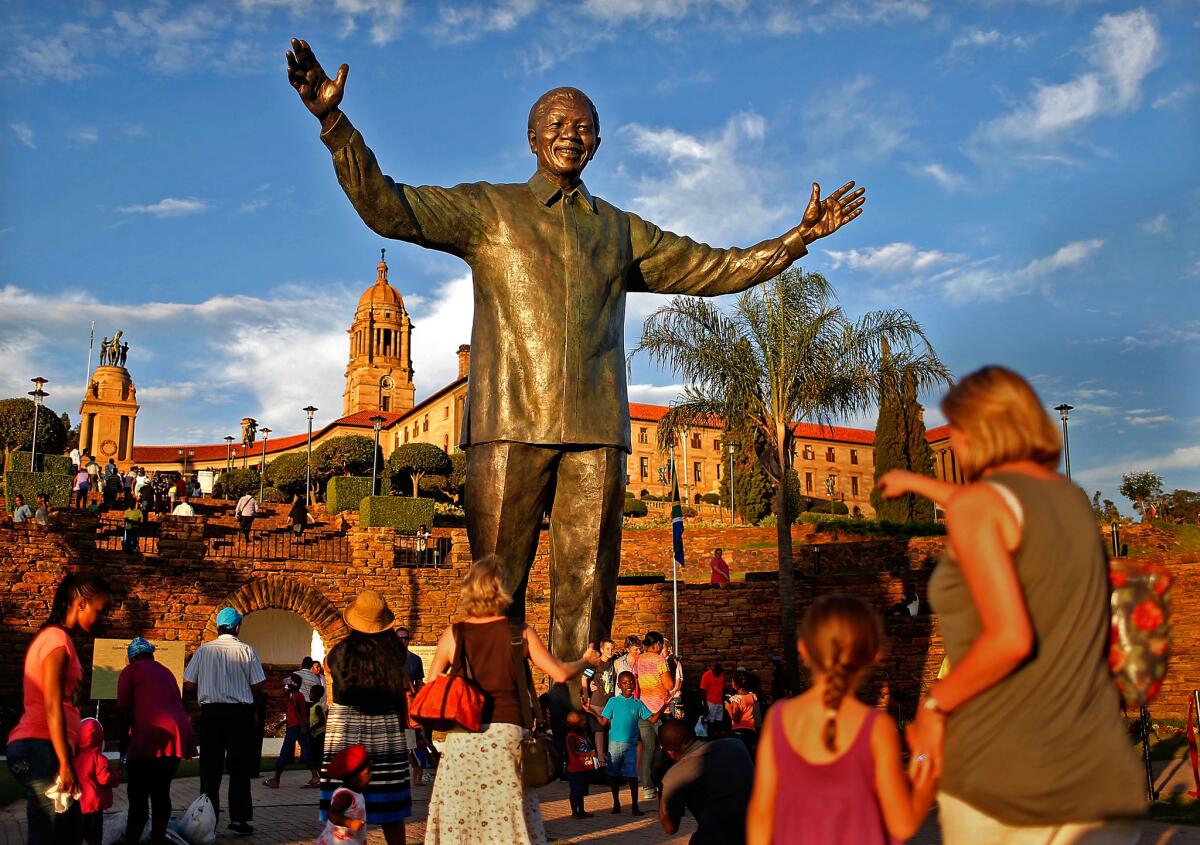
Visitors take photos of the statue of former South African President Nelson Mandela in Pretoria, South Africa.
The hidden gem of that freedom trail, though, is Liliesleaf, a farmhouse nestled in the now wealthy suburb of Rivonia, north of Johannesburg.
Liliesleaf was the underground headquarters of the ANC during the early 1960s, when it moved from passive resistance to armed struggle, and it occupies a role as important to South Africa’s revolutionary history as Paul Revere’s ride.
The story of Liliesleaf is fascinating: The ANC purchased it through a front company, and it was occupied by a white South African who was secretly an ANC member and military strategist, along with his wife and two young children. For a time, Mandela lived in the small servants’ quarters in the backyard, posing as hired help.
What happened at Liliesleaf on July 11, 1963, though, changed South Africa forever.
A team of South African security police concealed inside a dry cleaner’s van stormed the farm and, in what appears to have been dumb luck, burst in on a meeting of the ANC military wing’s high command, which was discussing a plan to overthrow the apartheid regime.
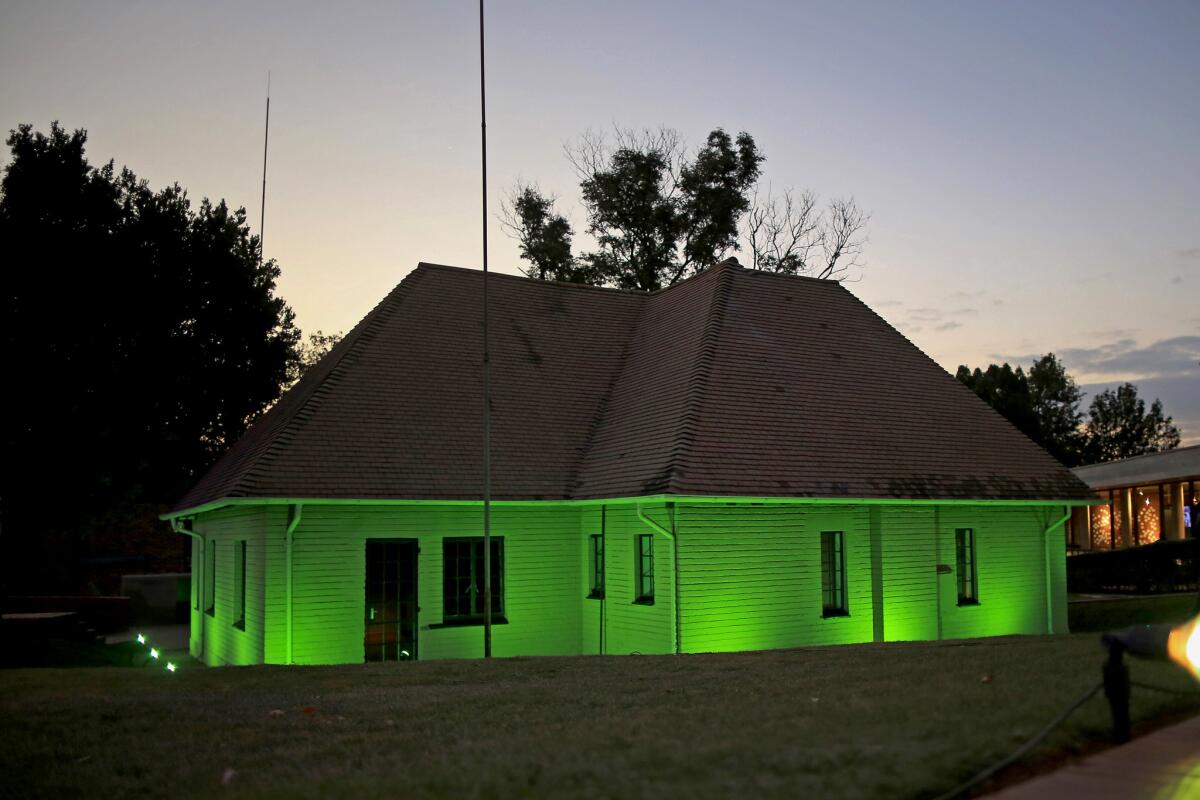
Liliesleaf Farm in Rivonia, South Africa, was raided by police on July 11, 1963, interrupting a meeting of Operation Mayibuye, a plan to overthrow the apartheid government.
The raid was a devastating blow to the ANC: Its top strategists, including Walter Sisulu and Govan Mbeki, were arrested. At the time, Mandela was already serving a five-year prison term, but his diaries and notes, found on the farm, would help lead to life sentences for him and seven others. The Rivonia Trial, as it was called, brought worldwide attention to the cause of black liberation and led to growing international isolation of South Africa.
Today, the farmhouse and other buildings have been restored, and walking through them it’s easy to imagine what it was like on that fateful day.
The raid is re-created in video and audio recordings, many of them featuring the memories of those who were there. In one video, Denis Goldberg, a white member of the ANC military wing, gazes at a police photo taken of him the day of the raid. “Yeah, this is when I was arrested,” he says. “Damn it.” He would spend 22 years in prison.
Arthur Goldreich, the ANC member who posed as the home’s occupant, recalls on another audiotape how Mandela had ordered him to burn the diaries. But, believing they would have historical value, he instead hid them in a coal storage facility behind the house. “That was stupid,” he says, in a bit of an understatement. (Goldreich was arrested but escaped and fled the country. He died in 2011.)
Sisulu, the most wanted man in South Africa at the time, was arrested with Mbeki (former President Thabo Mbeki’s father) and several others in a thatched-roof outer building, where they were plotting the guerrilla war.
A video in that room today introduces Hennie Pitout, the only surviving member of the police unit, who recalls the raid and even points to the table on which the ANC leaders’ plans were spread out.
An enduring mystery of the Liliesleaf raid is: Who led the police to the farm? The museum devotes a wall display to myriad possibilities, from the CIA operative based at the U.S. Embassy to the resident of a nearby trailer park who thought it was suspicious that a lot of black men were coming and going at odd hours.
‘Born Frees’
South Africa’s historic sites are not overrun with visitors. Liliesleaf gets only about 200 visitors a month; Mandela’s house in Soweto draws about twice that many. Most are foreigners.
Jabulani Ntumba, who works in the ticket office at Liliesleaf, told me that South Africans have little interest in their history and too few teachers include it in their lessons. “Students who come here aren’t looking at the history; they are looking at my job and wishing they had it,” he said.
For some, it may just be too soon. In particular, the generation of South Africans born after the end of apartheid — known here as the “Born Frees” — feels less inclined to celebrate how far the country has come. For them, especially the millions still living in impoverished townships, liberation feels more like a first step than a life-changing event.
A longtime friend who spent several years on Robben Island and is now the father of a “Born Free” told me: “The ‘Born Frees’ are good for us. They don’t even care about apartheid. They remind us that we’ve come a long way, but we have more to go.”
I had my own reminder a day later, as I was leaving the Mandela house in Soweto, an area where I had covered many confrontations between anti-apartheid activists and government troops. Police had shut down the neighborhood streets because of a protest against Eskom, the government-owned electric utility that has instituted regular “load-shedding” blackouts because the grid cannot handle the nation’s demands.
A local newspaper article on the demonstration the next day carried the headline: “The ANC protests against itself.”
The nation remains a work in progress 25 years after the end of apartheid. But protecting the memories of the freedom struggle is a worthy effort and one South Africans will one day come to appreciate.
::
If you go
THE BEST WAY TO JOHANNESBURG, SOUTH AFRICA
From LAX, Delta, KLM, British, Emirates, Virgin Atlantic, Lufthansa, Air France and Swiss offer connecting service (change of planes) to Johannesburg. Restricted round-trip fares from $994, including all fees and taxes.
WHERE TO VISIT
Apartheid Museum, Northern Parkway and Gold Reef Road, Johannesburg; 011-27-11-309-4700. Open daily.
Hector Pieterson Museum, 8288 Maseko St., Orlando West, Soweto, 011-27-11-536-0611
Liliesleaf, 7 George Ave., Johannesburg
Mandela House, 8115 Vilakazi St., Orlando West, Soweto; 011-27-936-7754
Robben Island tours; 011-27-21-413-4200. Three-and-a-half-hour tours, including a ferry to and from Cape Town, offered daily at 9 and 11 a.m. and 1 p.m.
TO LEARN MORE
Visit Johannesburg Tourism’s website
Visit South Africa Tourism’s website
More to Read
Sign up for The Wild
We’ll help you find the best places to hike, bike and run, as well as the perfect silent spots for meditation and yoga.
You may occasionally receive promotional content from the Los Angeles Times.
